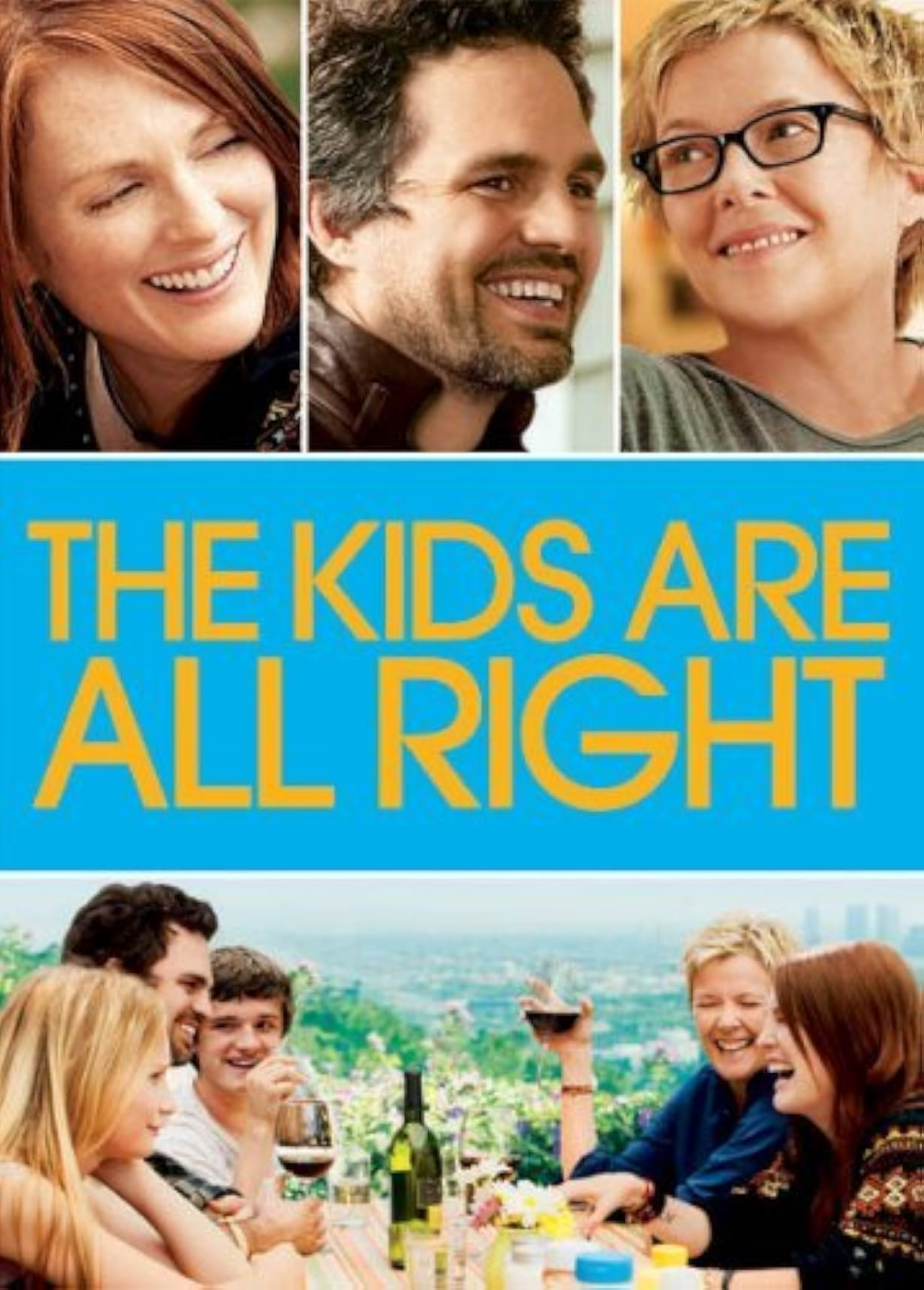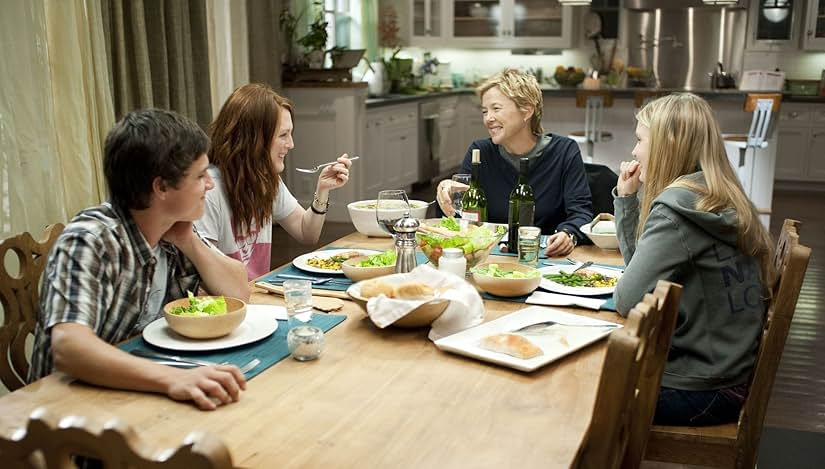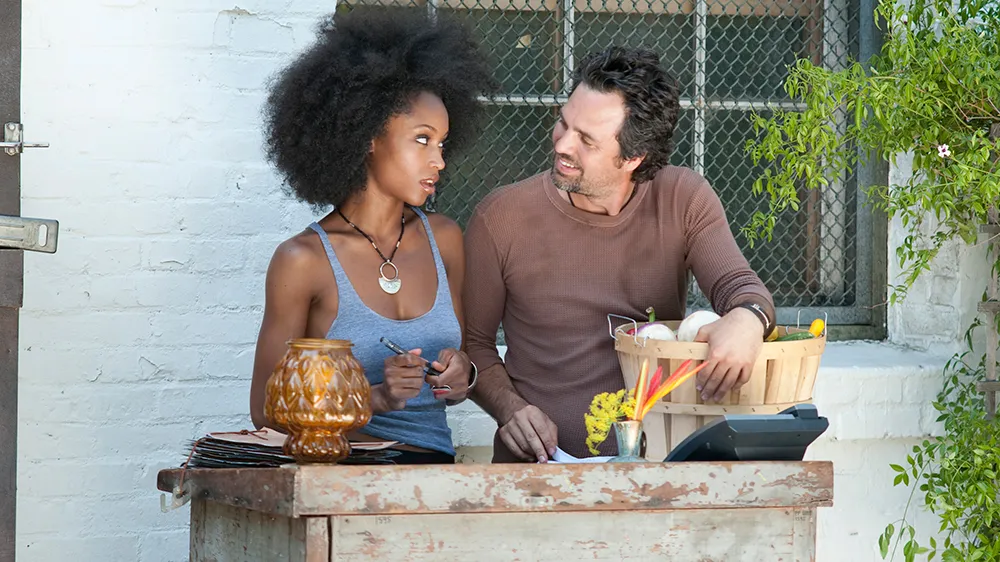The Kids Are All Right: Queer Conservatism Under the Guise of Progressiveness
Jules (Juliane Moore) and Nic (Anette Benning) are two lesbians living a true middle-class American dream with a white picket fence, a house in the suburbs, and two beautiful children they conceived with the help of an anonymous sperm donor in Lisa Cholodenko’s The Kids Are All Right. However, when Joni (Mia Wasikowska), Jules and Nic’s eldest, turns eighteen, she contacts the sperm donor to arrange a meeting with her brother, Laser (Josh Hutcherson). Paul (Mark Ruffalo) is an “alternative” hippie type, who had no idea his sperm had been used. The kids and Pual meet and hit it off amazingly. This spawns Paul’s attempts to be in his biological children’s lives and ultimately threatens to break apart their family.
This 2010 film is hands down the most heterosexual gay film
I’ve ever had to watch in my life. It is homonormative from top to bottom. This
family, while reared by two women, fits perfectly into the heterosexual ideals
of American home life. One of the first scenes we get in the movie is of Nic
coming home late to her two kids and her stay-at-home wife with dinner on the
table. Nic is the breadwinner who’s pulled away from her wife because of work
calls, has a drinking problem, and is annoyingly condescending about her wife’s
passions. Jules is the stay-at-home mom with a desire to start a career with
her artistic passions as her eldest is preparing to leave the nest, all while
she strives to gain her wife’s approval and attention. These roles are ones I’ve
seen played out in a number of straight comedy dramas that center around a
struggling marriage. The goal of this film is oriented more towards
assimilation to the norm than it is about pushing boundaries. “The Kids Are
All Right (Kids) reinforces how the family portrayed in the film is just
like everyone else’s (except for the lesbian aspect—and that’s not a big
deal),” Tammie Kennedy writes in “Sustaining White Homonormativity: The Kids
Are All Right as Public Pedagogy”. “In other words, not only are “the
kids all right,” but also the whole family is “normal” (119). While I
understand that in the fight for equal rights for the LBGTQ+ community, it’s
part of the process to appeal to straight people, It’s a disservice to queer
people to essentially straight-wash the entire story to do so (I mean, for example, the one lesbian sex scene was entirely PG and played for laughs, while the multiple heterosexual sex scenes were very raunchy and explicit). This film could
have benefited from more radicalism, but instead, it confirmed more queer
conservatism in a way that only further upheld overtired and even harmful
stereotypes.
Alongside the homonormativity, working hand in hand to
uphold the “normal” message of this film, is whiteness. The entire main cast is
white, and three of the supporting roles are BIPOC - Luis (Joaquín Garrido),
Tanya (YaYa Decosta), and Jai (Kunal Sharma) - and all of them fit into racial
caricatures. Luis (Joaquín Garrido) is the low-wage Mexican gardener, whose
accent is actually made fun of in the film by Jules and Paul. He’s the butt of
the joke, and the movie doesn’t give him much more purpose of character beyond
that. Jai (Kunal Sharma) is the boy Joni has a crush on, who is depicted as the
shy, awkward guy who’s bad with women – a common stereotype for Desi characters
in Hollywood. Not to say that those personalities don’t exist for Desi people,
but in this film, where the other BIPOC characters are all stereotypes, it’s
fair to point out the common trope that Jai fits into. Tanya (Yaya Decosta) is
the sole black character in the film and is nothing more than a plot device to
juxtapose Paul’s lifestyle with Jules and Nic’s. “In fact, the black and Latino
characters almost do all the work of getting “the gays” a place in straight
reality,” writes contributors from The Black Youth Project. “The black
woman, who buys interesting afro-centric gear from Brooklyn provides the sperm
donor/father the cred necessary to come off as a cool, free, funky kinda guy.
While the motorcycle certainly gives him some swag, there is nothing like a
good old black woman to add some true virility.” There is, of course, nothing
wrong with a white man having sex with a black woman, or a black woman being
sexually active – in fact, those are totally normal things. However, in this
context, it feels almost as if they were using Tanya to show just how “alternative” his lifestyle is to further paint him as the
antagonist in the story – which is problematic.
All of these racial characters essentially function to
uphold the idea that upper-middle-class white nuclear families are the norm. Kids
are trying so hard to assimilate into a heterosexual culture that it
basically throws other minorities under the bus (ignoring the intersectionality
of gender, race, sexuality, and class in doing so) to obtain that goal. In his
essay, “The Matter of Whiteness” Richd Dyer, has this to say: “This then is why
it is important to come to see whiteness. For those in power in the West, as
long as whiteness is felt to be the human condition, then it alone both defines
normality and fully inhabits it. . .White power nonetheless reproduces itself
regardless of intention, power differences, and goodwill, and overwhelmingly
because it is not seen as whiteness, but as normal. White people need to learn
to see themselves as white, to see their particularity. In other words,
whiteness needs to be made strange” (12). Whether it was done consciously, or
as a result of implicit biases, this film maintains the “superiority” of white
life in a way that is, for lack of a better word, icky.
Works Cited
The Kids Are All Right. Directed
by Lisa Cholodenko’s, Focus Features, 2010.
Kennedy,
Tammie M. “Sustaining White Homonormativity: The Kids Are All Right as Public
Pedagogy.” Journal of Lesbian Studies, edited by Ella Ben Hagai, Routledge,
2014, pp. 118-132.
“The
Kids Are All Right (spoiler alert).” The Black Youth Project, 22 July
2010, https://blackyouthproject.com/the-kids-are-all-right-spoiler-alert/.
Accessed 4 Dec. 2024.






I agree that the film works to reinforce norms. As you pointed out, even though the main couple are lesbians, they still fit into roles that are often portrayed in straight comedy dramas. The film works to reinforce normativity using stereotypical gender roles and whiteness. Great post!
ReplyDeleteYour note on this film being "the most heterosexual gay film" you've had to watch made me laugh, because it's so true! While this feel marketed itself as progressive simply because it has lesbians, it really read as crushingly heteronormative. Additionally, so many of its jokes aren't funny, but rather laughing at the expense of marginalized people, which really leaves a poor taste watching almost 15 years after its release. I wholeheartedly agree that most of this film felt pretty icky. Thank you for your post :-)
ReplyDelete